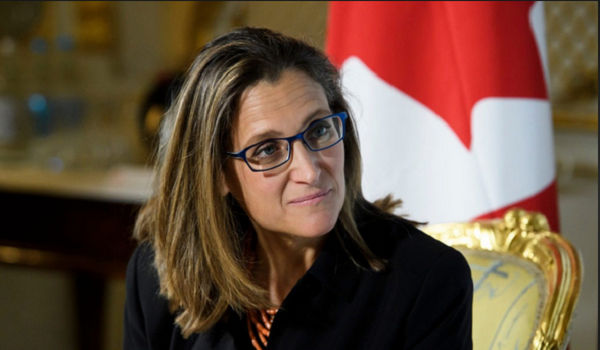Ottawa tweaks to capital gains taxation for businesses not good enough, business groups say
Ottawa’s moves to blunt the impact of its recent capital-gains tax changes on small business owners and entrepreneurs don’t go far enough, with many still facing a higher tax burden when they sell their companies, business groups say.
On Monday, the federal government announced several tweaks to its new Canadian Entrepreneur Incentive, which lowers the capital-gains taxes that eligible business owners pay when they sell their companies, on profits up to a lifetime maximum of $2-million. The CEI will now be open to people selling agriculture and fishing properties, which had previously been excluded, and the government watered down several other eligibility requirements.
The CEI was introduced in the spring budget as an offset to a broader change in taxes on capital gains – money made by selling assets. The Liberal government increased the inclusion rate on capital gains (the proportion of the gain which is subject to tax) to 66 per cent from 50 per cent for businesses. The inclusion rate also increased for individuals on annual capital gains above $250,000.
The Liberals said the tax increase was needed to pay for public investments in housing and other initiatives aimed at improving affordability. However, the change in the April budget was met with outrage from across the business community, with many warning that it could hamper investment and discourage entrepreneurship.
This week’s tweaks to the CEI program show the Department of Finance is open to suggestions from its critics. It scrapped the requirement that someone must be company founder to be eligible for CEI benefits and reduced ownership requirements. It also doubled the pace at which the program will be rolled out, with the incentive increasing by $400,000 a year instead of $200,000, and reaching the full $2-million incentive level by 2029.
So far, however, business lobby groups are giving mixed reviews.
Dan Kelly, head of the Canadian Federation of Independent Businesses, said the CEI will lower the tax burden for many of his members – in particular, owners of eligible businesses who sell their companies for a profit of less than $6.25-million.
The CEI lowers the inclusion rate to 33 per cent from the normal 50 per cent on profits up to $2-million. That’s on top of an outright capital-gains tax exemption for small business owners, which the Liberals also increased to $1.25-million from $1-million in the spring budget. Expanding the CEI to a broader set of companies and individuals is a positive, Mr. Kelly said.
However, a range of small businesses – including doctors offices, restaurants, hotels and real estate firms – are still excluded from the incentive, even after this week’s changes.
It is “unfair and deeply disappointing that the government didn’t open it up to every sector of the economy in the same way,” Mr. Kelly said.
“And this in no way, shape or form addresses the overriding concern about the increase in the [capital-gains] inclusion rate. And so, as a package, it is still a big net negative for small business owners.”
Doctors were one of the most vocal groups opposing the capital-gains tax changes in the spring budget, and the Canadian Medical Association said this week’s changes to the CEI do nothing to address their concerns.
“It does not appear that incorporated physicians will be able to benefit from this incentive,” CMA spokesperson Elena Gabrysz said in a statement. She said the association is pressing the government to tax capital gains earned by professional medical corporations at the old 50-per-cent inclusion rate for gains under $250,000, similar to the rules for individuals.
Farmers are one of the key beneficiaries of this week’s changes to the CEI. People who sell their farms and make a profit of less than $6.25-million should, theoretically, face a lower tax burden under the new system, compared with before the budget.
Representatives from several farm lobby groups, including the Grain Growers of Canada, the Canadian Federation of Agriculture and the Ontario Federation of Agriculture, welcomed the changes to the CEI. However, they said that most of their members are still coming out behind.
“It will benefit some farmers, but most farmers are still in a worse off place than they were before with the 50-per-cent capital-gains inclusion rate,” said Kyle Larkin, executive director of Grain Growers of Canada. He noted that grain farmers tend to own large parcels of land whose value has gone up significantly. That creates large potential capital-gains liabilities if the farm is sold or passed on to the next generation.
Ben Bergen, head of the Council of Canadian Innovators, welcomed the elimination of the founders requirement in the CEI. However, he noted that venture-capital investors and highly skilled tech workers, who make most of their money in stock options, still won’t be able to benefit from the CEI.
“The changes that they made are poking founders less in the eye, but they’re still getting poked in the eye. It’s doing nothing to help talent and capital,” he said.
Katherine Cuplinskas, a spokesperson for Finance Minister Chrystia Freeland, said in a statement that the government was “making the tax system fairer. That is the fiscally responsible thing to do.”
This article was first reported by The Globe and Mail













